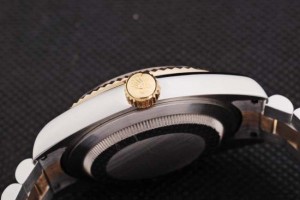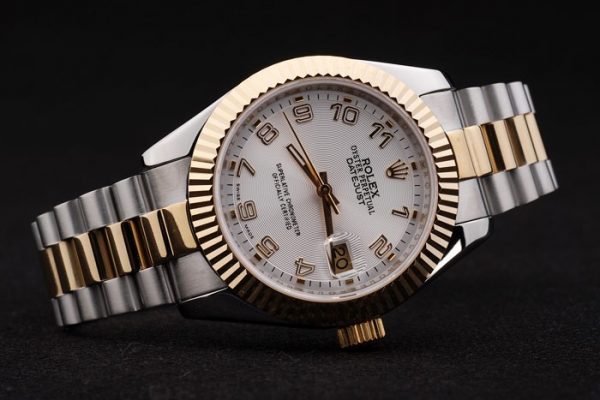Luxury Best Rolex Metal Collection. 14K Gold
Gold’s role in watchmaking far predates the invention of the clock, and the precious metal can be found in the earliest time-measuring devices of various ancient cultures – sundials and millimeters in China and Babylonia.
It is favored for its visual beauty and resistance to tarnishing and corrosion, offering the perfect combination of aesthetics and function. Thus, for centuries, it has been to watch not only cases but also many inner workings forged in gold. Its durability and natural anti-magnetic properties have led it to be used to protect the back plate, bridges, and gears. 
Throughout its history, the brand has offered models made from different purity of gold; 9 K and 14K were popular in their more mature years due to cost-effectiveness and certain import laws in some countries. In modern times, any Rolex watch, certainly a gold watch, is a reflection of luxury and achievement, and only 18K is considered good enough.
However, it was only in the mid-1970s, when it became legal to sell 18K gold replica watches in the United States, that the lower alloys began to fall out of fashion. You could still buy Rolex watches made of 14k until the 1990s.
Because 14K gold contains a higher percentage of hard metal, it is a more durable alloy than the 18K gold that Rolex uses exclusively today. And, because less gold is in the mix, it is also less expensive to produce.
Because of this, 14k remains one of the most popular grades in modern jewelry, and the vast majority of wedding rings in the United States are made from it.
Pure gold removed from the ground is classified as 24 karats. In addition to being virtually unusable as a watchmaking material, it has no particularly pleasing color. Beauty emerges when it is mixed with other components in varying proportions. It is easier to think of these blends in terms of “parts of a whole.” Thus, 14K is the 14 parts of the 24 types of gold.
The end of this federal legislation coincided very well with the quartz crisis that forced Rolex to change its marketing strategy. The influx of cheap and extremely accurate electronic watches from Japan effectively crippled the traditional Swiss industry, putting nearly two-thirds of them out of business in less than a decade. While they fared better than most, Rolex was still forced to start trading on other qualities inherent in their products, such as heritage, craftsmanship, and, most importantly, desire. Instead of just making the best mechanical watches, they have now become the ultimate lifestyle brand. Along with this came a commitment to using only the finest materials, and as a result, 14k gold was slowly replaced by 18k gold across the board.
